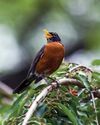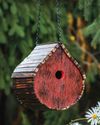
Whether you are lucky enough to see them in your backyard or plan to head to a local spot for prime viewing, lightning bugs are synonymous with summer. Let's illuminate some little-known truths about these fascinating, glowing creatures.
What's the Real Name?
More than 2,000 species of lightning bugs and fireflies exist worldwide, including 170 in North America. According to Adele Wellman, Allegany region environmental educator for New York State Parks, calling them either fireflies or lightning bugs is fine. "There is no difference between them; they are the same insects," she says.
Though both names are correct, these flashers are technically neither bugs nor flies. Instead, they are beetles. Next time you've got one in your hands, look closely for hardened wing cases, the elytra. This is a key beetle characteristic.
Growing Up
"Fireflies go through complete metamorphosis," Adele says. "They lay eggs in moist areas, and these hatch in about two weeks. The larvae grow for months, pupate underground or beneath tree bark, and then transform into adults."
Adulthood is short-lived for these beetles. Most adult fireflies survive for just days or weeks.
This story is from the August/September 2022 edition of Birds & Blooms.
Start your 7-day Magzter GOLD free trial to access thousands of curated premium stories, and 8,500+ magazines and newspapers.
Already a subscriber ? Sign In
This story is from the August/September 2022 edition of Birds & Blooms.
Start your 7-day Magzter GOLD free trial to access thousands of curated premium stories, and 8,500+ magazines and newspapers.
Already a subscriber? Sign In

Clever Cowbirds
Learn more about these birds that are infamous for letting others raise their young

Ask the Experts
Pros offer spring plant care tips and tough IDs

Rustic diy Birdhouse
Whether you're hardcore handy or an everyonce-in-a-while crafty person, you probably have a small pile of scrap wood handy. Grab your tools and turn your extra materials into any house wren's dream nest box.

THE LATEST IN Lilacs
Learn about updated varieties of this timeless classic and how to take care of them

Meet the ORIOLES
GET TO KNOW eight TYPES SEEN THROUGHOUT THE U.S. AND WHAT MAKES EACH ONE STAND OUT

CBD FOR YOUR PAIN
Everyone feels the hurt as you age, but CBD can help you deal with it

Welcome, New Blooms
Update your yard with 2024's freshest florals

Western Blues
Beckon these regional bluebirds to your yard with nest boxes and mealworms

Incredible Eggs
Fun facts about these tough yet fragile wonders

Life Well Lived
Surprising facts about bird life spans